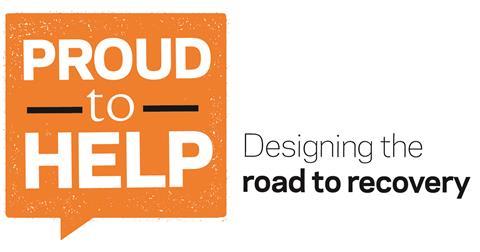The pandemic has not dampened appetite for doing the right thing
Architects strongly believe the pandemic has made social value more important than ever, according to research by Building Design.
If anything the havoc caused by coronavirus has underlined how vital it is to design with communities and the environment in mind from the outset, architects said.

More than 90% of respondents to a Building Design survey on Doing the Right Thing said the pandemic has made social value more important, or that it has not diminished its relevance.
The findings are published today to coincide with Building Design’s big AYA Shortlist Day. This year’s awards include for the first time a Social Impact Award launched on the back of our Designing Social Value campaign. Later today editorial director Chloe McCulloch will be chairing a discussion on social value with Professor Flora Samuel and other specialists in the field. You can register here to watch it for free.
Which of the following sectors have the greatest commitment to the social value agenda?
Architects completing our survey said the sector most committed to social value is public housing, with education trailing a distant second. Private housing clients and the sport and leisure sector came in third.
Of the projects with a focus on social value where have you seen the greatest benefit to society?
You felt the biggest benefit to society is stronger community engagement in schemes. Increasing local skills and employment and enhancing local amenities were other public goods cited by respondents.
Of the projects with a focus on social value where do you see the greatest benefit to your practice?
For almost half of you the biggest benefit to your practices of engaging with social value was the feeling that you are doing the right thing, with long-term reputational benefit coming in at second place with 23% of the vote.
The biggest challenge you face is ensuring that social value objectives are maintained all the way through to completion. Measuring success can also be problematic.
Park ego at the door and consider this in every decision, across all scales and all sectors
Survey response
But there are other issues, such as persuading quantity surveyors to agree new approaches on which they have no cost information.
One respondent wrote: “As such they will not set foot outside their comfort bubble. They drive capital expenditure down but drive operational expenditure up. Focus to harness social value has to shift to operational expenditure costs.”
What has been the biggest challenge when implementing social value objectives?
Building Design’s Doing the Right Thing survey also looked at zero carbon and found that most architects believe the pandemic has not affected clients’ attitudes here, although a fifth believe it has been pushed down the priority list.
Has the pandemic affected the priority placed by clients on delivering net zero buildings?
Once again the sector most committed to net zero is housing – but, interestingly, both public and private housing this time – followed by education and offices.
Which of the sectors below have the most commitment to delivering net zero buildings?
We asked architects what their biggest contribution to net zero could be and many pointed to the importance of embedding the right approach from the very start.
“Understanding the detailing and designing into projects at an early stage without resulting in add-ons,” as one put it.
Another said: ”Ideas. Experiments in traditional and vernacular building construction. Enthusing clients and consultants. Making structural engineers think about structural timber and stone, etc.”
Demonstrating architects’ enduring utopianism, another said: ”To stick with the ideals of net zero, you may lose clients but you show integrity.”
Architects complained the biggest challenge in developing net zero designs is sourcing accurate information on the embodied carbon content of products.
But cost and getting buy-in from the client and project manager were also cited. Two-thirds admitted that developing a net-zero design is more expensive.
Improving expert knowledge for the whole design team, client and users, as well as confidence in products were other concerns raised.
One respondent said the biggest challenge was, “Getting the client to agree to the consultant scope to test and iterate designs and gradually reduce the loads. We need a committed, integrated design team and the time to analyse design options through various types of modelling through all design stages.”
To find out more about Building Design’s AYA Shortlist Day and all the events and announcements we have lined up today, keep coming back to the home page or click here.

















No comments yet